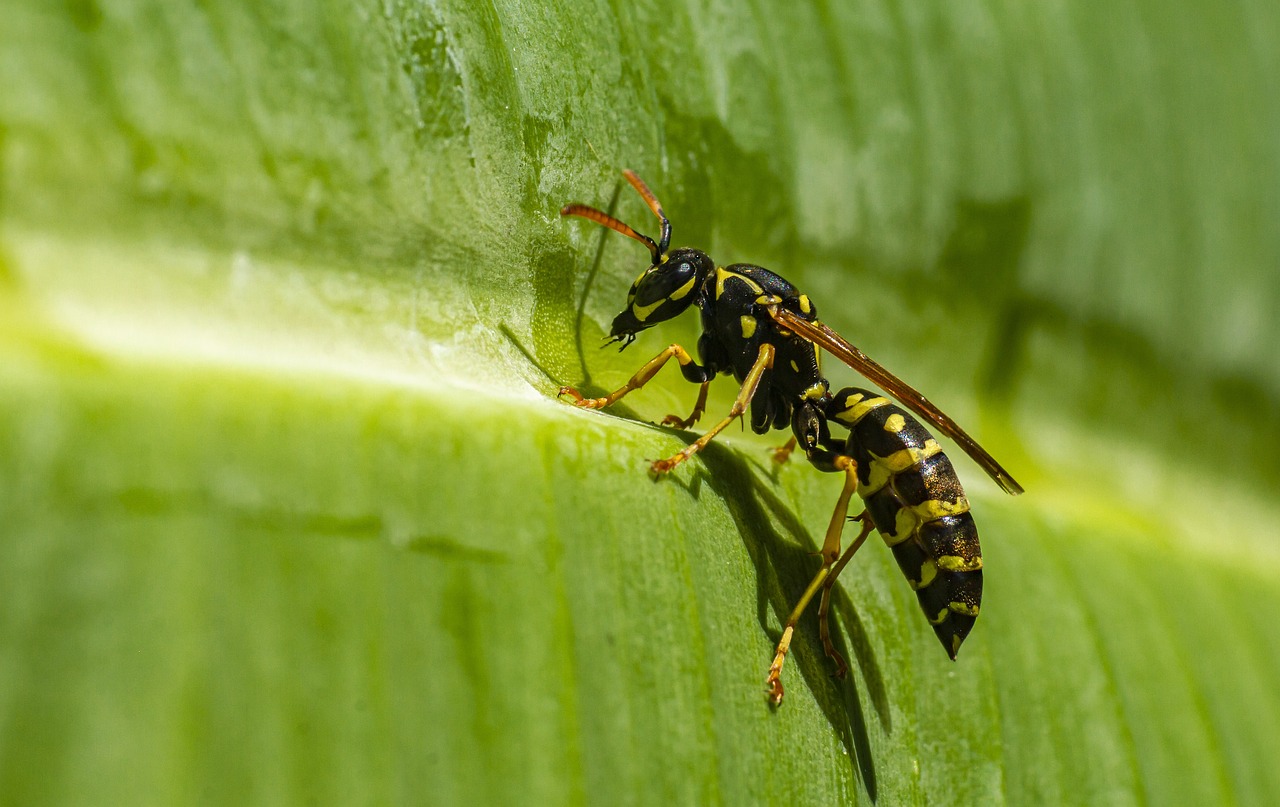The European paper wasp (Polistes dominula) is a species of social wasp that is widely recognized for its distinctive appearance and behavior. Here are some key details about this fascinating insect:
Appearance
- Size: Adult European paper wasps measure about 10-15 mm (0.4-0.6 inches) in length.
- Coloration: They have striking black and yellow markings on their bodies, which can sometimes be confused with other wasp species like the common yellowjacket. However, Polistes dominula can be distinguished by its slender body and longer legs that dangle during flight.
Habitat
- Range: Originally native to Europe and parts of Asia, the European paper wasp has been introduced to North America and other regions, where it has become well-established.
- Environment: They are highly adaptable and can be found in a variety of habitats, including urban areas, gardens, woodlands, and fields. They often build their nests in sheltered locations like eaves, attics, and shrubs.
Behavior
- Diet: European paper wasps are omnivorous. Adults primarily feed on nectar and other sugary substances, while larvae are fed a diet of chewed-up insects, including caterpillars and other pests. This makes them beneficial for pest control.
- Social Structure: They are eusocial insects, living in colonies that consist of a single queen and multiple workers. Colonies are relatively small compared to other wasp species, usually containing fewer than 100 individuals.
- Nesting: Their nests are made from paper-like material, which they create by chewing wood fibers mixed with saliva. These nests are open and consist of a single layer of hexagonal cells where the queen lays her eggs.
Life Cycle
- Reproduction: In spring, mated queens emerge from hibernation to establish new colonies. The queen begins the nest and lays the first eggs, which hatch into workers that take over the duties of expanding the nest, foraging for food, and caring for subsequent broods.
- Development: Eggs hatch into larvae, which go through several molts before pupating. After pupation, they emerge as adult wasps. This process takes a few weeks, depending on environmental conditions.
Adaptations
- Defense: While not as aggressive as some other wasp species, European paper wasps will defend their nests if threatened. Their sting is painful and can cause allergic reactions in some individuals.
- Foraging: They are effective predators of caterpillars and other garden pests, which they capture and paralyze with their sting before carrying them back to the nest to feed the larvae.
Impact
- Ecological Role: European paper wasps play an important role in controlling pest insect populations, making them beneficial to gardens and crops.
- Invasive Species: In regions where they have been introduced, such as North America, they can outcompete native wasp species for resources and nesting sites. This can lead to declines in native wasp populations and changes in local ecosystems.
Conservation
- Status: The European paper wasp is not considered endangered and thrives in a wide range of environments.
- Management: In areas where they are considered invasive, efforts to manage their populations include monitoring and removing nests, especially in urban and residential areas where they may pose a nuisance or threat to people.
The European paper wasp is a highly adaptable and beneficial insect, known for its role in natural pest control and its distinctive nesting behavior. Despite being an invasive species in some areas, it continues to be a subject of interest for its ecological impact and interactions with native species.
Visited 852 times, 2 visit(s) today
Views: 1433
Subscribe to the newsletter:
